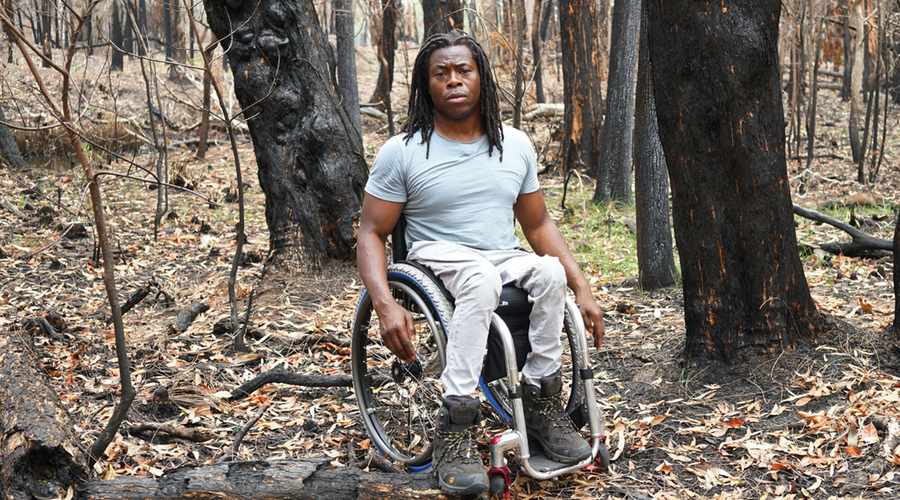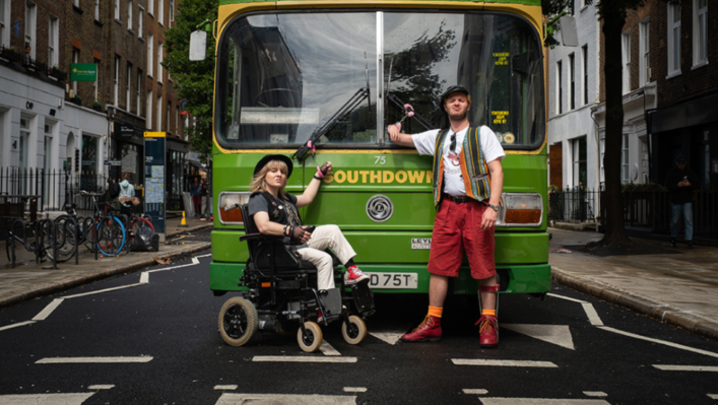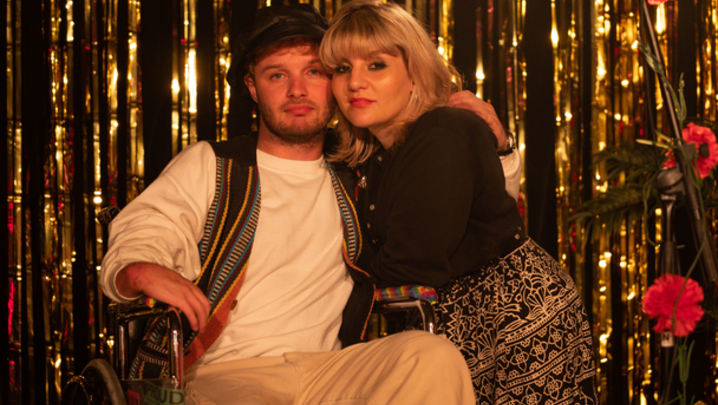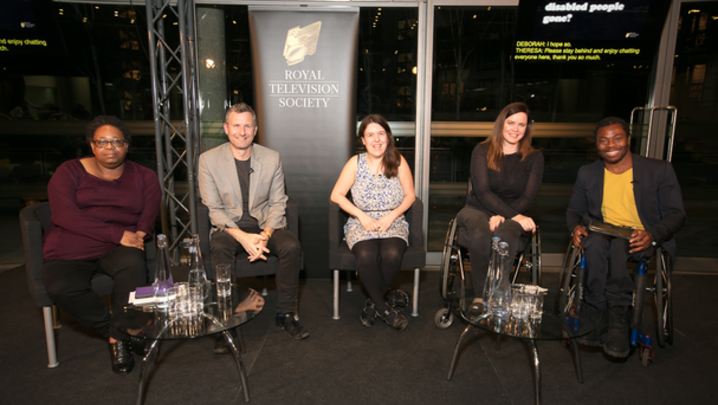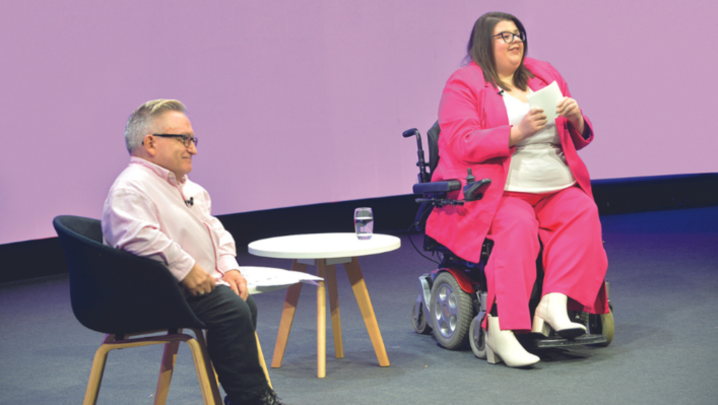Shilpa Ganatra discovers how, for disabled people working in TV, even minor adjustments can pay big dividends.
One of my first TV shows was about endangered animals around the world,” recalls presenter Ade Adepitan. “When I met with the producer and director, they told me: ‘This show is going to involve scuba diving in the Great Barrier Reef, trekking through the jungle in South Africa and Namibia, and hiking up mountains in Romania. We don’t want you to feel under any pressure, but is this something you think you can do?’ I said: ‘When do we start?’ I’m the sort of person who takes things on and then finds the solution as we go along.
“When a disability becomes frustrating is when decisions are made for you and before you’ve had a chance to have any input. Often, if you sit down with that disabled person, you can find solutions. If we can send someone to the moon, we can make TV sets accessible.”
As an intrepid presenter and wheelchair user, Adepitan has seen the agility and creativity of the TV industry applied to uncover these solutions. One example he cites is a camera operator on location during another production who, rather than film Adepitan from above or crouch in a way that would be bad for his back, asked to borrow a spare wheelchair to film from.
The result was “completely different and far more immersive” footage, says Adepitan. “It wasn’t a big adjustment. We didn’t have to call in Elon Musk to come up with a groundbreaking idea. It was just thinking outside of the box and using simple ideas to make life easier for all of us.”
Diversity is increasing in other areas, too. The stunning performances of the deaf contestant, EastEnders actor Rose Ayling-Ellis, in the current series of Strictly Come Dancing has raised the issue of deafness with huge audiences and has been inspirational for deaf people, demonstrating that deafness can have no limits.

The show has also been praised by deaf charities for incorporating sign language and gestures, including the Makaton sign for thank you. And, in one unforgettable moment, as her tribute to the deaf community, the music was stopped midway through the routine while Ayling-Ellis and her partner continued the dance in silence.
However, across the industry, deaf, disabled and neurodivergent people face a daunting range of practical challenges. A recent survey by The Sir Lenny Henry Centre for Media Diversity found that long, irregular hours were a consideration for 65% of disabled people working in TV. Issues such as being unable to drive or physically use equipment was a consideration for 51%, while 14% needed assistance from other people, such as support workers or British Sign Language interpreters.
As the social model of disability emphasises, it’s not the impairment that’s the problem but the lack of adjustments available on, say, the studio floor or location. “Everyone has things they can and can’t do,” says director, producer and presenter Richard Butchins, director of BBC Two’s Targeted: The Truth About Disability Hate Crime. “No one thinks someone who wears glasses is disabled – because the adaptation is effective. But imagine a world without glasses.…” He adds: “I self-shoot, and I shoot well, and tech helps me with that because it means you’re less reliant on physical factors.”
Technologies such as screen readers, live captioning and well-designed hardware have become much more sophisticated in recent years. These help deal with some of the issues disabled people face regularly.
Actor and writer Genevieve Barr, who starred in BBC crime drama The Silence, agrees: “As a deaf screenwriter who is oral [ie, who uses verbal communication], I prefer video calls employing live automated captions. The adjustments in environments during Covid have been a really positive change – people are more willing to communicate this way, and there have been rapid improvements in technology to enable automated captions.”
Though the pandemic has seen the overall employment gap between disabled and non-disabled people widen, one positive aspect has been that home working is now more accepted – a move embraced by many disabled (and non-disabled) people.
It demonstrates, says Sam Tatlow, a creative diversity partner at ITV, that the industry is capable of significant change: “Two years ago, when working on a production, the very thought of doing so from home was an alien concept.
“For a long time, there has been resistance to changing how we do things because of the fast turnarounds.… There’s never enough money and enough time to deliver what we’re producing at the quality that we want to deliver. But the past 18 months has proved that there is some flexibility.”
The 2010 Equality Act created a legal obligation for an employer to make reasonable adjustments to overcome barriers for disabled employees. “But what is and isn’t considered reasonable is a grey area,” says Tatlow. “Ultimately, it’s about enabling disabled people to do the job that they’ve been hired to do.”
Butchins suggests that budgets should have room in them for supportive measures to help disabled staff. “I always argue that the tariffs that broadcasters pay are predicated on being made by able-bodied people,” he says. “There is still some implicit reluctance to use disabled people because decision-makers think it will make the production more difficult or more expensive.
“But if it costs you a little more to use someone who’s disabled, do it. You’ll easily get your money back, because disabled people have something to prove, so they’ll work hard. And you’ll find that different point of view that production companies are looking for.”
Tatlow adds: “Often, it doesn’t cost a lot. The practicality of it might involve doing things slightly differently, such as adjusted working hours so that rests can be taken throughout the day.
“When things do cost money, it’s often not very much. I’m a wheelchair user and I make use of the Access to Work scheme [a state-funded initiative to support any special requirements for disabled people]. It pays for my taxi from the train station to the office. But, in the gap between me starting at ITV and having the scheme in place, ITV paid for it.”
The biggest consideration for disabled people is one that costs nothing to adjust: the attitudes of their colleagues.
Seventy-one per cent of disabled people surveyed say they think about it when they consider their work options. Of course, budgeted training and information provision do help, but a shift in the mindset of co-workers alone could lead to a better working environment.
With only 5.8% of off-screen workers in the UK TV sector being disabled, compared with about 20% of the working-age population, broadcasters say they are keen to redress this balance. ITV aims to have 12% of its workforce made up of disabled people by 2022; Sky’s target is 10% of off-screen production by 2023, while Channel 4’s entry-level trainee scheme says that it particularly welcomes disabled people.
The BBC’s Elevate scheme concentrates on the issue of disabled people leaving the industry after working for a few years.
And a recently announced joint Netflix and BBC scheme is directed at raising the number of shows that are written, created or co-created by deaf, disabled or neurodivergent people over the next five years.
But far more can be done. The Creative Diversity Network is pushing for changes to the Access to Work scheme to make the funding more practical for an industry reliant on speed and short-term contracts.
In his MacTaggart Lecture at the 2021 Edinburgh TV Festival, dramatist Jack Thorne announced that he, Barr and production manager Katie Player had founded Underlying Health Condition, a pressure group to tackle the lack of representation and accessibility for disabled people in British TV.
This month, they begin their activities with a survey and report on studio spaces and facilities companies. “The accessibility issue is profound and – as pointed out by the survey and real case studies – deeply troubling,” says Barr. “There’s plenty of motivation out there for change, but there is a need for something more substantive.
“Disability is a complicated nut to crack, and intent is not enough. Change is happening at a glacial pace, and we are asking for something better.”

